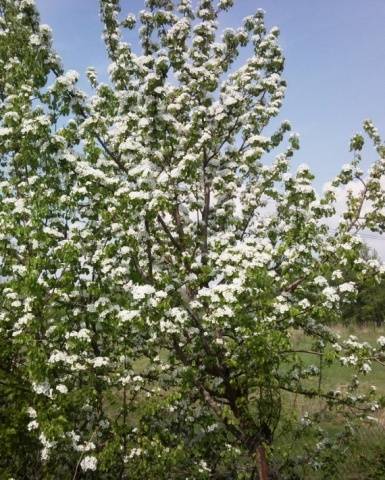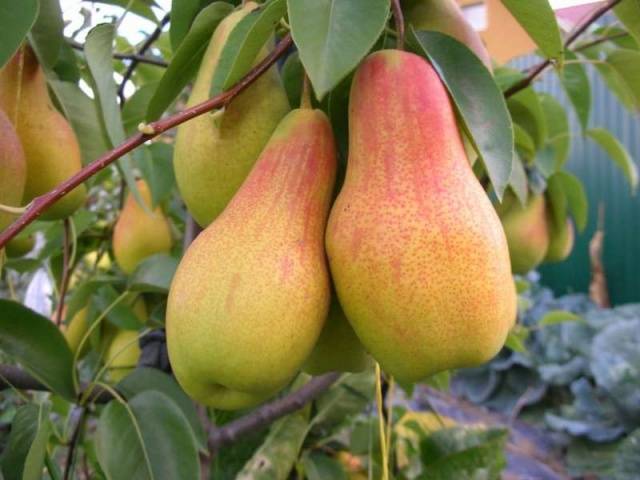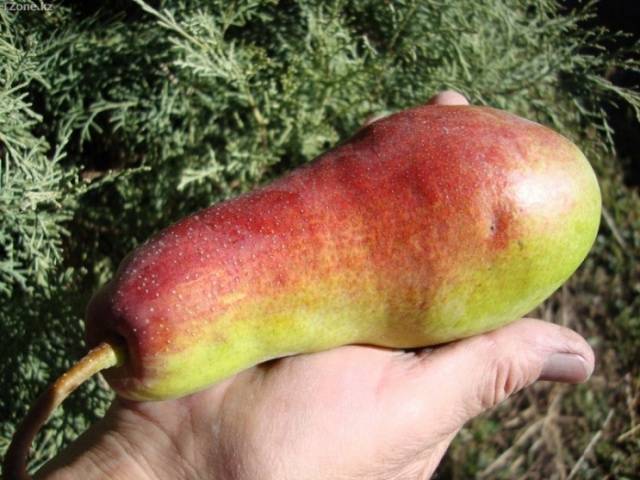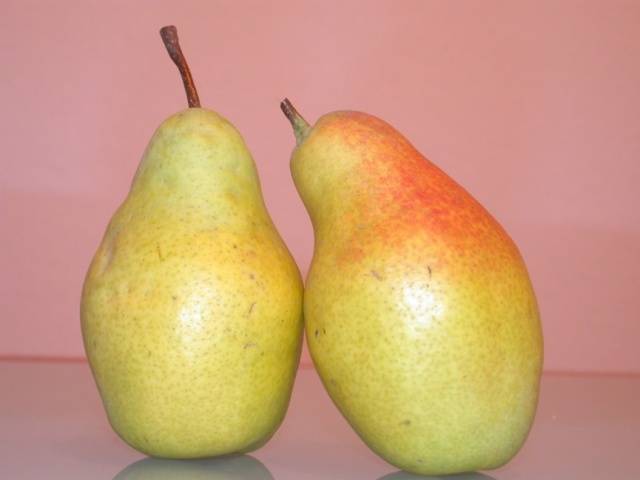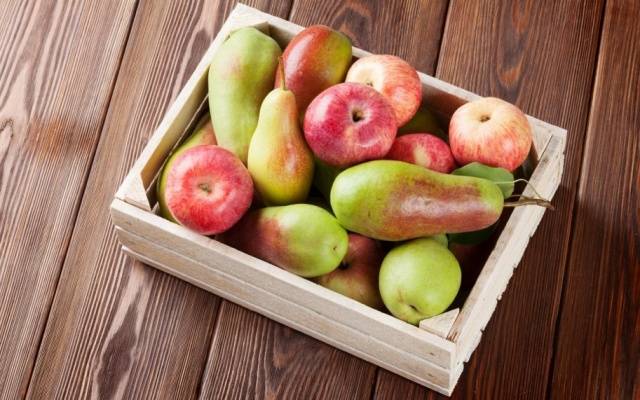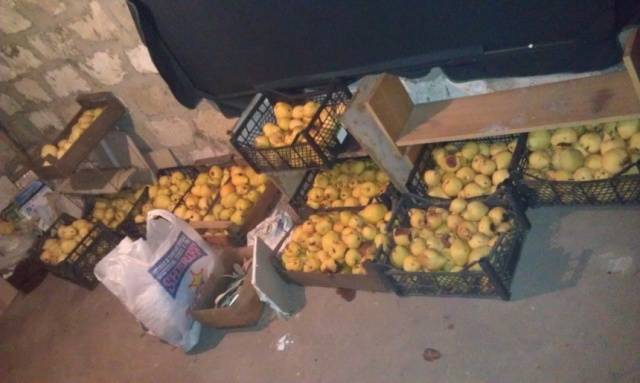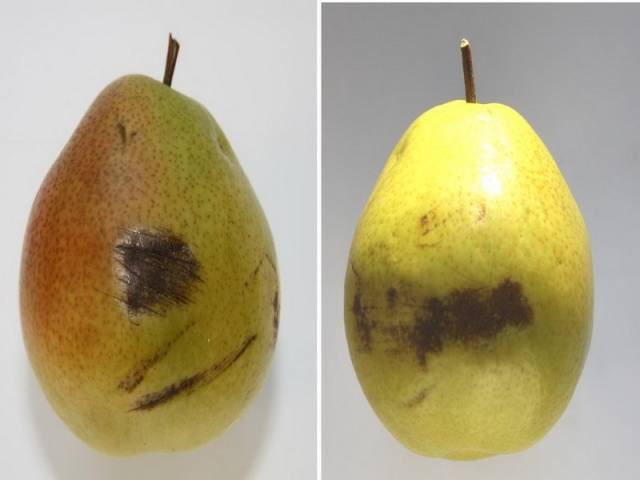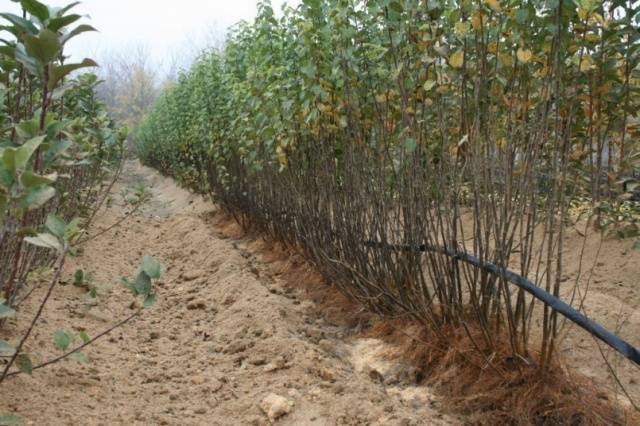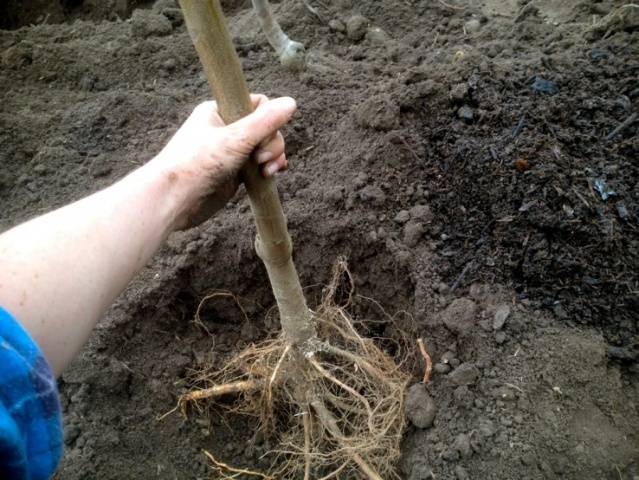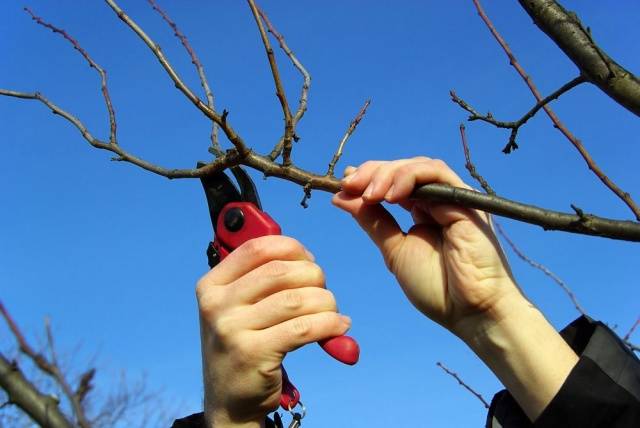Content
The Talgar beauty pear was born in Kazakhstan from the seeds of the Belgian pear "Forest Beauty". Breeder A.N. Katseyok bred it by the method of free pollination at the Kazakh Research Institute of Fruit and Viticulture. Since 1960, the variety has passed state tests and only in 1991 the pear was zoned in the Kabardino-Balkarian Republic.
Description of the crown
The pear tree is a southern plant and Talgarka is no exception. This pear variety grows best in the southern regions of Russia. Stavropol Territory, Krasnodar Territory, Caucasus, Crimea - the habitat of this pear tree. Well suited for this variety of pears and the territory of Ukraine and Moldova.
Description of the pear variety Talgar beauty is better to start with a photo of the crown of a pear tree.
The crown of a pear tree is pyramidal in shape with a wide base. The tree is of medium height - 3 m. The crown density of the tree of this variety is average. Branches of the second and more orders hanging down. The fruits are mainly formed on the ringlets.
The bark on the standard tree trunk and branches of the first order is gray. In the process of growth, the old "tight" bark leaves the trunk of the tree and branches in scales. Shoots of the second order with brown bark, medium size, not pubescent. The buds are large, conical, not pubescent.
The leaves of the tree are dark green, smooth, large. The shape of the leaves is ovoid with an elongated pointed tip. In the middle, the leaves are slightly concave. The edges of the leaves are serrated. The leaves are planted on long petioles.
Talgarka belongs to the autumn group of fruit trees. Pear trees of other varieties are planted next to the talgarka, also belonging to the autumn group: Kucheryanka, Hoverla, Lyubimitsa Klappa, The conference other.
Description of fruits
Description of pear fruits Talgar beauty can be started with photos and reviews of those who have tasted these fruits. As you can see in the photo, Talgar pear has an irregular "one-sided" fruit shape.
Often fruit buyers are concerned about this irregular shape of pears. In this case, there is no reason to worry. But there is also a reason why the fruits of the Talgar beauty pear become ugly. Not just irregular, but ugly. Reason: pear tree disease - scab. If the scab attacks the fruit early in development, the fruit grows disfigured. If the fruit is damaged at a late stage, a dark brown, almost black, spot appears on the pear, under which cork tissue forms. As long as the fruit is small and there are no cracks on the spot, nothing threatens the fruit. With an increase in the size of the fruit, the stain cracks, and pathogenic bacteria penetrate through the cracks into the pear.
The weight of a medium-sized fruit is 170 g. Sometimes pears can grow up to 250 g. At the time of picking, the color of the fruit should be light yellow. Most of the surface of the pear peel is a bright dark pink blush. The skin of a ripe pear is shiny, smooth, of medium thickness. On the inner side of the pear skin, small dots are visible, which are green on the main color and white on the "blush". The pulp of the fruit is creamy, medium density, granular.
The stem of the pear is curved, medium in size. The cup is open, the saucer is even, narrow, deep. The funnel is shallow in the fetus, it may be completely absent.The core of the fruit is elliptical, medium in size. Seeds are closed, small.
Reviews of the Talgar beauty pear taste are extremely positive. Talgarka has a weak specific pear aroma. The pulp is sweet and crispy.
Sugars in pears are 9%, and acids are only 0.37%. The fruit is very juicy and well suited for juicing.
Gardeners highly appreciate the productive characteristics of the Talgar beauty pear tree, since this pear tree does not have poor harvest years due to its "fault". Talgarka begins to bear fruit at the age of 5 years.
Features of the
The ripening period of the Talgar beauty pear is the beginning of September in the southern regions. To the north, the dates may move to a later time. But according to the reviews of experimental gardeners, the Talgar beauty pear in the Moscow region freezes out in cold winters. The only way to preserve the tree is to plant it on a frost-resistant stock. This measure also does not guarantee that the pear will not freeze in winter, but its chances of survival increase.
Since in cold regions the vegetation period begins later and ends earlier than in the southern ones, in Central Russia, the ripening period of Talgar pear is shifted to the time of autumn frosts and the fruits must be removed prematurely in order to preserve the harvest.
Replenishing
The question of ripening is more concerned with Talgar beauty pears grown in the Moscow region. The products of fruit trees are not considered ripening after being plucked from a branch. It is always best if the pear ripens on the branch. But due to bad weather or the imminent onset of frost, especially in the northern regions, the crop sometimes has to be harvested ahead of time. If the difference between the time when it was necessary to harvest the Talgar beauty pear and the date of the actual harvest is small, pears can ripen with the correct storage technology.
If the pears were removed not even at the stage of technical ripeness, but earlier, then it is important to know how to ripen the green Talgarka pears correctly. Ripening technology is not difficult, but with a large harvest, it may be problematic to place the fruits correctly for storage.
How to equip a ripening place
To ripen the fruit, you will need a locker with newspaper or toilet paper bedding. A plastic bag can be used. Fruits are put in a box / bag so that there is a possibility of free air exchange between them. Toilet paper is placed in the bag along with the fruit. The paper is needed to absorb moisture, which will be released when the pears "breathe". Together with green fruits, 2-3 ripe fruits are placed in the container.
Ripe fruits and vegetables release ethanol gas, which speeds up the ripening process. Without ethanol, green fruits may not ripen at all.
The box is closed and the bag is tied to prevent ethanol loss. The fruit is checked periodically. If necessary, replace wet paper with dry paper.
Storage
Storage of pears Talgar beauty is carried out in a cool place with a temperature of about 10 ° C. Fruits are laid out on straw or sawdust. If you need to put the fruits in several rows, they must be shifted with straw. Pears should not touch each other. Talgarka plucked at the stage of technical ripeness can be stored until the end of winter. If the fruits are ripe on the tree, they do not lie longer than a month, although such pears are tastier. Therefore, to the question "when to shoot Talgar beauty pears" everyone answers to himself. Depending on your desires. If you need to preserve the fruit for a long time, they are plucked before full ripeness. If you are planning jam, liqueur or just eat now, it is more profitable to wait until the fruit is completely ripe.
Dignity
In the description of the Talgar beauty pear, its early ripening, good keeping quality of fruits, high taste, good transportability, resistance to diseases, frost resistance are indicated as the advantages of the variety.
But reviews about the Talgar beauty pear variety are rather contradictory. Someone likes the sugary sweetness of the fruit, some consider this taste insipid. Therefore, a large amount of sugar can be attributed to both advantages and disadvantages. Much depends on how the fruit is used.
Frost resistance, judging by the reviews about planting and caring for the Talgar beauty pear, is also a controversial point and largely depends on the clone that the summer resident is trying to grow. At the same time, it is not possible to find out the origin of the seedling. Because of this, in the Middle Lane, the purchase of this variety turns into a lottery. Maybe you are lucky and the seedling will turn out to be quite seasoned. Or maybe not.
disadvantages
The main disadvantage of the Talgar beauty pear, judging by the description and photo, is the appearance of dark spots on the pulp in the event of a late harvest of fruits. This is due to the fact that the ripe fruit is soft and damaged by the slightest pressure. Fruits at the technical stage of ripeness are devoid of such a lack.
Also, not everyone may like the crispy pulp of the fruit in the stage of technical ripeness. But this is a matter of personal preference.
Growing
Talgarka is an unpretentious variety and takes root well almost everywhere, except for clay, sandy or waterlogged soil. The rest of the soil is considered suitable for this pear tree.
Description of the Talgar beauty pear, as well as photos and reviews of planting seedlings of this variety, agree that the best time for trees with an open root system is autumn. Before frost, the root system of the tree will have time to adapt to new conditions, and in the spring it will actively grow. When planting in the fall, pear seedlings already form and unfold buds in the spring. If time is lost, you can plant a pear tree in the spring, but in this case, the full development of the seedling will begin only next year.
Ideally, young trees are not allowed to bloom for a couple of years so that the root system can develop fully.
Seat selection
Pear trees require good lighting, therefore, when choosing a place for Talgarka, you need to allocate a plot open to the sun's rays on the southern, western or southwestern side of the cottage. In this case, the tree will receive enough sunlight to set a sufficient number of fruits, and the fruits will acquire a blush characteristic of Talgarki.
When buying seedlings from a nursery, it is better not to stint and take a little more young trees than you plan to leave in the garden. Some seedlings may not take root.
The permissible distance between adult talgarok pear trees is 4-5 m. To keep the place between pear trees not empty, it can be planted with berry bushes.
How to plant a pear seedling:
- a hole for a pear tree is dug 2 weeks before the planned planting of the seedling. The upper fertile layer is removed first and laid to one side, the lower one to the other. The size of the pit is determined by the size of the pear seedling, but the average size is 0.6 m in depth, 1.5 m in diameter;
- fertilizers are applied to the soil before planting. Only the top fertile soil layer is used, to which about 3 - 4 buckets of rotted compost or manure are added. With a strong acidity of the soil, 1 - 2 glasses of ash;
- the resulting mixture is poured into the pit, making a mound. A support stake is driven into the top of the hill. Cola length 1.4 m, diameter 5 cm;
- A pear seedling is prepared for planting by inspecting and pruning dry and rotten roots.If the root system of the seedling has time to dry out during storage, the pear tree is placed in water for a couple of days;
- it is better to plant a pear tree together, while one is holding a pear seedling, the other is filling it with fertile soil around it;
- after planting a pear tree, the soil is carefully tamped with hands;
- the penultimate planting point: watering a pear seedling with 2 - 3 buckets of water;
- in order to keep moisture in the soil longer, the hole under the pear seedling must be mulched with dry leaves, straw or sawdust.
Watering
Pear trees need watering in spring and summer. The amount of water and the frequency of watering depends on the specific weather conditions and the water requirement of the tree. Average water consumption: 30 - 40 liters per 1 m². Water consumption increases in dry and hot weather. At the beginning of fruit ripening, watering is slightly reduced to allow the fruit to gain sugar.
Pruning
When pruning, they form the crown of pear trees, preventing crowding and diseases, as well as providing the set fruits with sufficient sunlight. If you do not regularly prune pear trees, the branches, growing, will no longer receive enough light, and the yield will begin to decline.
The first pruning of a pear tree is carried out after planting. In a two-year-old pear seedling, the skeletal branches are cut. Not all, but 4 of those that are located at approximately the same distance. The lateral branches of a pear 2-year-old are also shortened by a quarter. An annual seedling is cut to a height of 55 cm.
A mature pear tree is pruned every spring, thinning the branches, and removing diseased and old branches that take away the life's sap from the tree. Dry branches must be removed without fail.
Testimonials
Conclusion
Talgarka is a pear variety with good taste, suitable for making juices, jams and fruit mixtures. But when growing fruit, gardeners may be faced with the inability of pear trees of this variety to withstand severe frosts.
